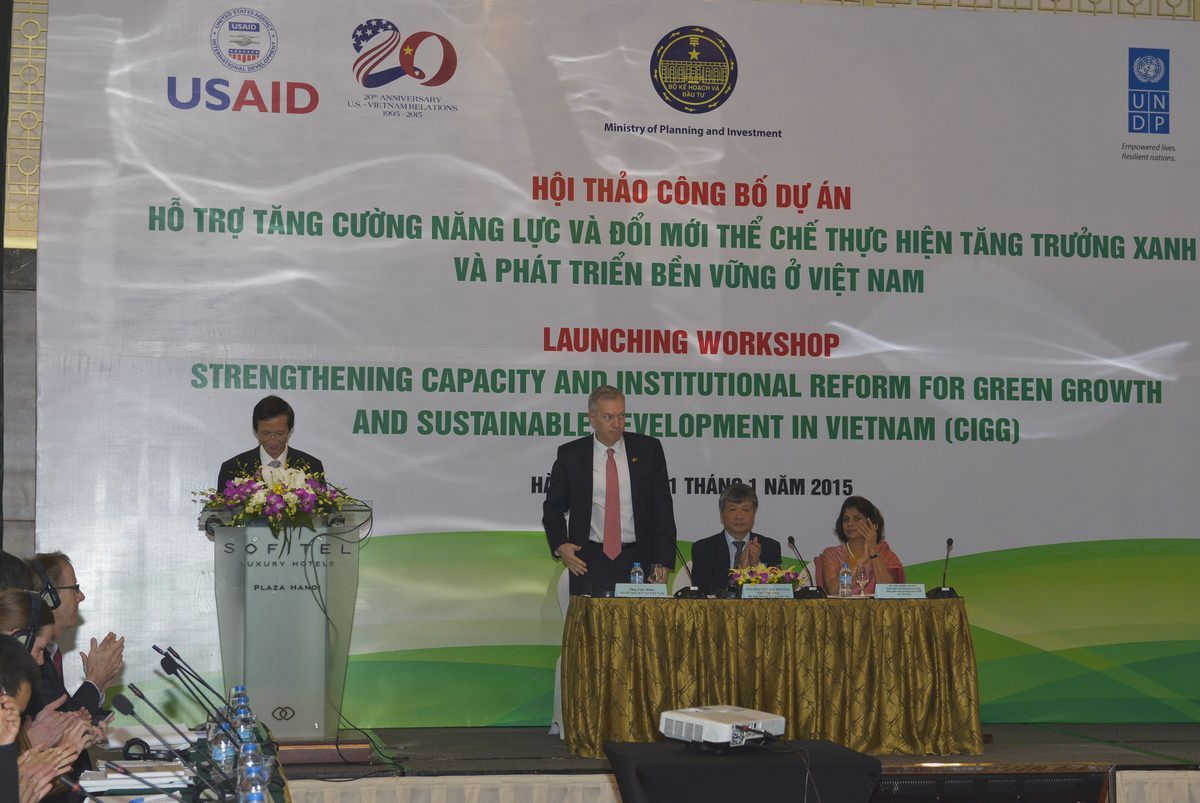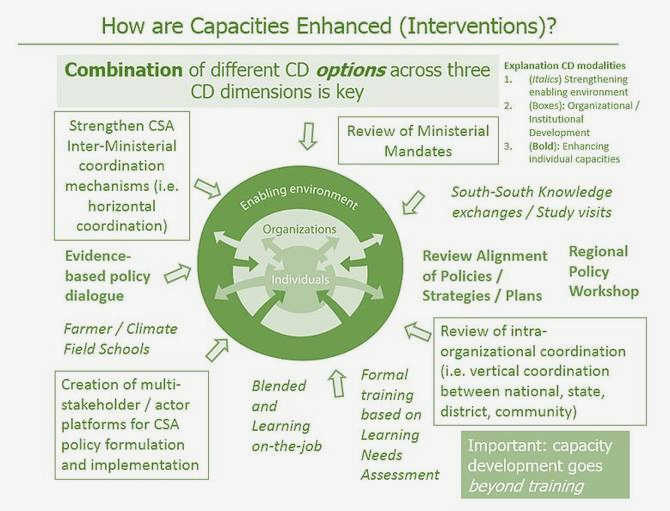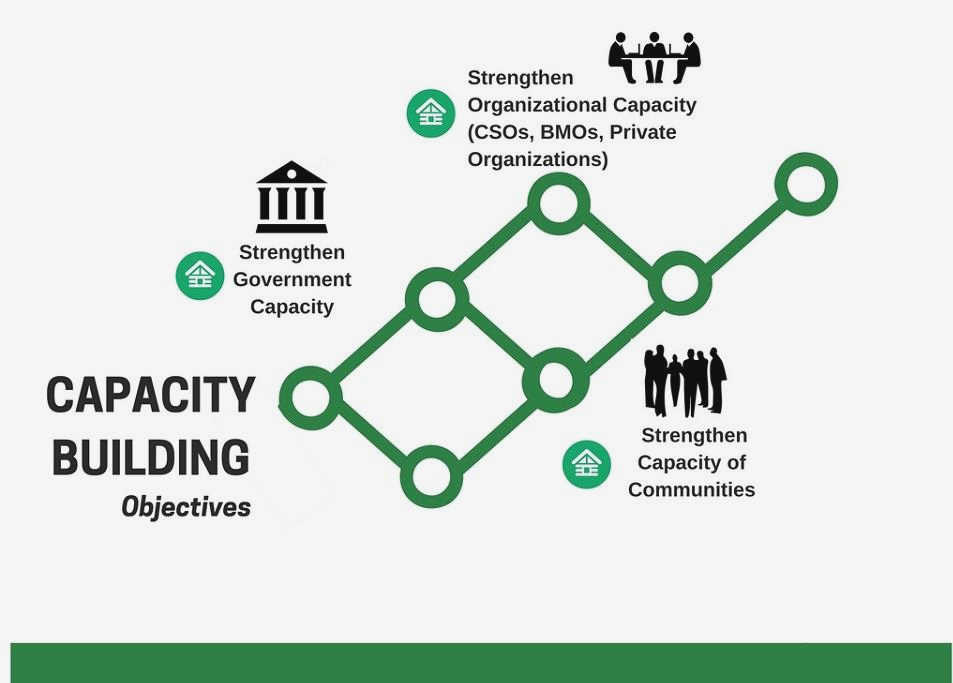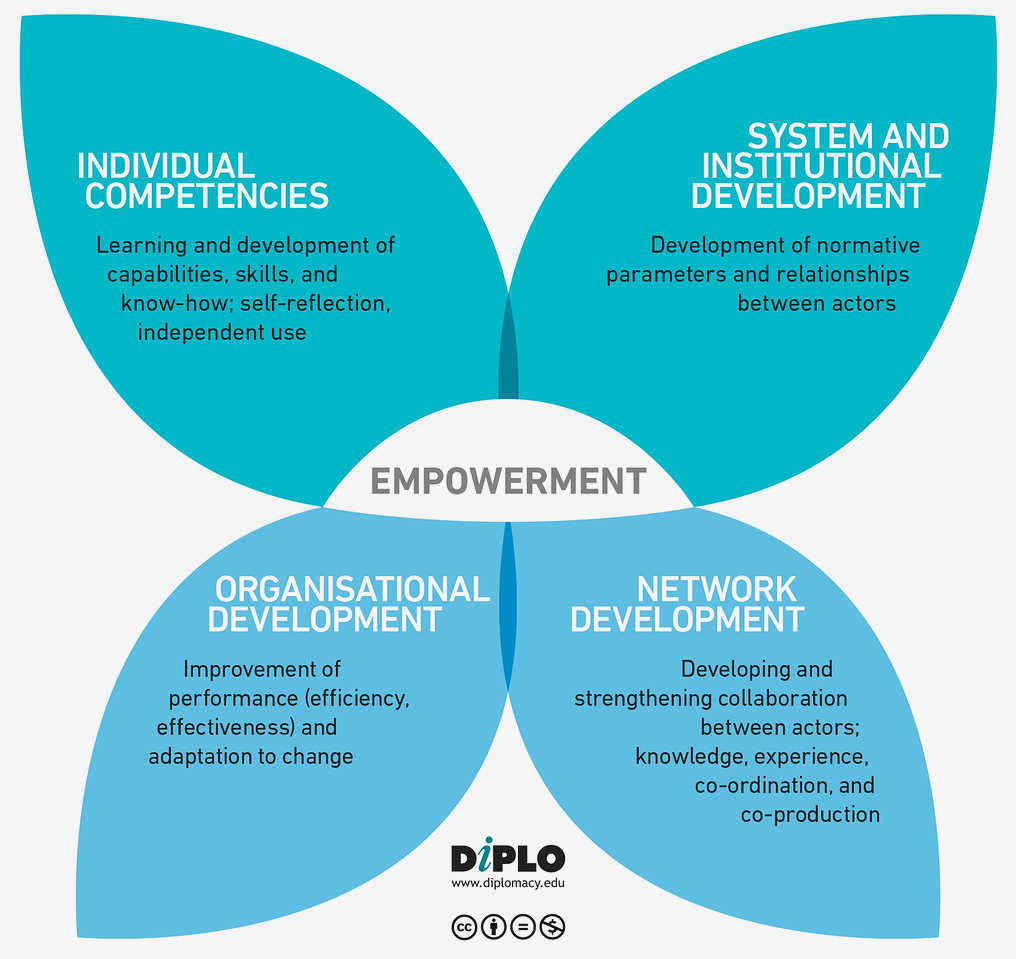Effective capacity building is crucial for civil society organizations to drive meaningful and sustainable change in their communities. By building the necessary skills, knowledge, and resources, these organizations can enhance their ability to address social, economic, and political challenges. This guide aims to provide a comprehensive framework for boosting civil society’s capacity for change, offering practical strategies and insights for organizations to develop and strengthen their capabilities.
To effectively build capacity, civil society organizations need to assess their current strengths and weaknesses. This involves identifying the specific areas where they require improvement, such as advocacy, fundraising, project management, or networking. Once the areas of focus are established, organizations can create tailored capacity building plans that address their unique needs and goals.
One key aspect of effective capacity building is developing strong leadership within civil society organizations. Effective leaders can set the vision, motivate and inspire their teams, and drive change. This guide provides guidance on cultivating leadership skills, fostering a culture of innovation and learning, and promoting diversity and inclusion within organizations.
Furthermore, capacity building should also focus on empowering individuals within civil society organizations. By providing training and development opportunities, organizations can enhance the skills and expertise of their staff members, volunteers, and community partners. This guide offers insights on designing effective training programs and fostering a learning culture that promotes continuous improvement and adaptability.
In addition to individual empowerment, effective capacity building also requires fostering collaborative networks and partnerships. Civil society organizations can benefit greatly from sharing knowledge, resources, and expertise with other organizations working in similar fields. This guide explores strategies for building strategic partnerships, establishing networks, and leveraging collective action to amplify the impact of civil society efforts.
Ultimately, this guide serves as a roadmap for civil society organizations looking to boost their capacity for driving social change. By implementing the strategies and recommendations outlined in this guide, organizations can strengthen their ability to contribute to their communities, advocate for social justice, and create a more equitable society.
Understanding the Importance of Capacity Building
Capacity building plays a crucial role in empowering civil society to drive positive change and make a meaningful impact in society. It involves strengthening the skills, knowledge, resources, and leadership of individuals and organizations to effectively address social issues and advocate for their causes. By investing in capacity building, civil society can enhance its ability to address complex challenges, adapt to changing contexts, and achieve sustainable development.
Capacity building is essential for civil society to build resilience and ensure its long-term sustainability. It enables organizations to improve their internal processes, enhance their governance structures, and develop strategic plans that align with their mission and vision. By strengthening their capacities, civil society organizations are better equipped to implement effective programs, engage stakeholders, mobilize resources, and demonstrate their impact.
A key aspect of capacity building is the development of human resources. By providing training, mentoring, and coaching to individuals, civil society can empower them with the necessary skills and knowledge to lead and manage projects, develop partnerships, advocate for policy change, and effectively communicate their message. Investing in the professional development of staff and volunteers is crucial for building a strong and competent workforce that can drive change.
Capacity building also involves fostering collaboration and networking within civil society. By encouraging organizations to share knowledge, exchange experiences, and collaborate on common goals, capacity building enhances the collective power and effectiveness of civil society as a whole. Through collaboration, civil society can amplify its voice, leverage resources, and create synergies that lead to greater impact.
Furthermore, capacity building helps civil society to build trust and credibility with stakeholders, including donors, government agencies, and the public. By demonstrating transparency, accountability, and professionalism, civil society organizations can attract support, build partnerships, and gain the confidence of those who have a stake in their work.
In conclusion, capacity building is essential for civil society to thrive and fulfill its role as a powerful force for change. By investing in the development of skills, knowledge, resources, and leadership, civil society organizations can enhance their ability to address social issues, drive sustainable development, and create a more equitable and just society.
Identifying Key Factors for Successful Capacity Building
When it comes to successful capacity building, there are several key factors that should be considered. These factors can greatly impact the effectiveness of the capacity building process and ultimately contribute to the overall success of civil society organizations.
1. Needs Assessment
A thorough needs assessment is crucial in identifying the specific areas where capacity building is required. This involves evaluating the current strengths and weaknesses of the organization and identifying the gaps that need to be filled. A comprehensive needs assessment provides a solid foundation for designing and implementing targeted capacity building initiatives.
2. Clear Objectives
Having clear and specific objectives is essential for effective capacity building. Organizations need to clearly define what they want to achieve through capacity building, whether it is improving leadership skills, enhancing organizational governance, or developing specific technical expertise. Clear objectives help guide the planning and implementation of capacity building initiatives.
3. Tailored Approach
Capacity building initiatives should be tailored to the specific needs and context of the organization. One-size-fits-all approaches are often ineffective and fail to address the unique challenges and circumstances faced by civil society organizations. A tailored approach takes into account the organization’s mission, goals, and operating environment, resulting in more targeted and relevant capacity building interventions.

4. Stakeholder Engagement
Engaging stakeholders throughout the capacity building process is essential for success. This includes involving key staff members, board members, volunteers, and other relevant stakeholders in the planning, implementation, and evaluation of capacity building initiatives. Stakeholder engagement helps ensure buy-in, ownership, and sustainability of the capacity building efforts.

5. Long-term Perspective
Capacity building is a long-term process that requires patience and a sustainable approach. It is important to recognize that building capacity takes time and cannot be achieved through short-term interventions alone. Long-term planning, commitment, and investment are necessary to achieve lasting change and build the capacity of civil society organizations.
In conclusion, identifying these key factors – needs assessment, clear objectives, tailored approach, stakeholder engagement, and a long-term perspective – is crucial for successful capacity building efforts. By addressing these factors, civil society organizations can strengthen their capacity to bring about positive and sustainable change in their communities.
Assessing the Current Capacity of Civil Society Organizations
Civil society organizations (CSOs) play a crucial role in driving social change and promoting democracy in their respective communities. However, to effectively contribute to transformative change, it is important to assess their current capacity.
One way to assess the capacity of CSOs is to evaluate their organizational structure and governance. This involves understanding the leadership and decision-making processes, as well as the presence of clear policies and procedures. It is important to determine whether the organization has a strategic plan in place and if it has the necessary resources and systems to implement it.
Another aspect to consider when assessing the capacity of CSOs is their human resources. This includes evaluating the skills, knowledge, and experience of staff and volunteers. It is important to determine if there are any skill gaps that need to be addressed through training and development initiatives.
Financial resources are also a key component of a CSO’s capacity. It is important to evaluate the organization’s financial management practices, including budgeting, fundraising, and reporting. Understanding the organization’s financial sustainability and its ability to effectively manage and allocate resources is crucial for long-term success.
In addition, assessing the CSO’s relationships with stakeholders is vital. This involves evaluating their partnerships and collaborations with other organizations, government agencies, and donors. Understanding the level of trust and cooperation between different stakeholders can provide insights into the CSO’s influence and effectiveness.
Lastly, it is important to evaluate the CSO’s impact and achievements. This involves assessing the outcomes and results of their work, as well as the systems and mechanisms in place to measure and track progress. It is important to determine if the CSO has a monitoring and evaluation framework in place to assess the effectiveness of their programs and initiatives.
By conducting a comprehensive assessment of these various aspects, it is possible to gain a holistic understanding of a CSO’s current capacity. This assessment can help identify areas for improvement and inform the development of targeted capacity-building strategies to enhance the CSO’s ability to drive meaningful change in their communities.
Setting Clear Objectives and Goals for Capacity Building
Setting clear objectives and goals is a critical step in effective capacity building. Without clear direction, organizations may struggle to prioritize their efforts and allocate resources effectively. To ensure success, it is essential to define specific objectives and goals that align with the organization’s mission and vision.
1. Identify the organization’s needs and challenges
Before setting objectives and goals, it is crucial to identify the specific needs and challenges that the organization faces. This may involve conducting a thorough needs assessment, engaging with stakeholders, and understanding the current capacity limitations. By understanding the existing gaps, organizations can set objectives that address these challenges directly.
2. Develop SMART objectives
SMART objectives are specific, measurable, achievable, relevant, and time-bound. These objectives provide clear guidelines for the capacity building process and help organizations stay focused on their goals. Developing SMART objectives requires careful consideration of what the organization aims to achieve, how progress will be measured, and what resources and timeframe will be required.
3. Prioritize objectives and goals
While it is essential to address all identified needs, organizations may need to prioritize their objectives and goals based on available resources and capacity. Prioritization ensures that limited resources are allocated efficiently and that the most critical needs are addressed first. This can be done by assessing the potential impact of each objective, considering the urgency of the need, and evaluating the organization’s capacity to address it.
4. Align objectives with the organization’s mission and vision
It is crucial for objectives and goals to align with the organization’s overall mission and vision. This alignment ensures that capacity building efforts are directly contributing to the organization’s long-term goals. Objectives that align with the mission and vision are more likely to generate enthusiasm among staff and stakeholders and maintain consistent support for capacity building initiatives.
In conclusion, setting clear objectives and goals is a foundational step in effective capacity building. By identifying needs, developing SMART objectives, prioritizing goals, and aligning them with the organization’s mission and vision, organizations can build capacity in a targeted and meaningful way.
Developing an Effective Capacity Building Strategy
Identify the needs and priorities
In order to develop an effective capacity building strategy, it is important to first identify the specific needs and priorities of the civil society organization or group. This can be done through conducting a thorough assessment and analysis of the organization’s strengths, weaknesses, opportunities, and threats. By understanding the areas where the organization needs to improve or develop new skills, knowledge, or resources, it becomes easier to create a targeted strategy.
Set clear goals and objectives
Once the needs and priorities have been identified, the next step in developing an effective capacity building strategy is to set clear and measurable goals and objectives. These goals should be specific, achievable, relevant, and time-bound. By setting clear goals, the organization can track progress and evaluate the success of the capacity building efforts.
Design tailored capacity building activities
After setting goals, the next step is to design tailored capacity building activities that address the identified needs and priorities. This can include training sessions, workshops, mentoring programs, networking events, and resource sharing. The activities should be designed in a way that engages participants and provides them with the necessary knowledge, skills, and support to enhance their capacity.
Implement and monitor the strategy
Once the capacity building activities have been designed, it is important to implement the strategy and monitor its progress. This can be done by regularly assessing the impact of the activities, collecting feedback from participants, and adjusting the strategy if needed. Monitoring the strategy allows the organization to ensure that the capacity building efforts are on track and making a positive difference.
Evaluate the results and make improvements
In order to continuously improve the capacity building efforts, it is important to evaluate the results and make necessary improvements. This can be done by collecting data on the outcomes and impact of the activities, soliciting feedback from participants and stakeholders, and analyzing the effectiveness of the strategy. Making improvements based on the evaluation findings ensures that the capacity building efforts are meeting the needs of the organization and contributing to positive change.
Creating a Learning Environment for Capacity Building
Creating a learning environment is essential for effective capacity building in civil society organizations. A learning environment encourages a culture of continuous improvement and knowledge sharing, enabling individuals and organizations to adapt and grow.
Facilitating a learning environment: To create a conducive learning environment, it is crucial to provide opportunities for individuals to acquire new knowledge and develop new skills. This can be done through workshops, trainings, and seminars that focus on specific capacity-building areas relevant to the organization’s goals and objectives.
Encouraging collaboration and teamwork: Collaboration and teamwork are vital elements of a learning environment. By fostering an environment where individuals can work together, share experiences, and learn from one another, organizations can tap into the diverse skills and perspectives of their team members, ultimately enhancing their capacity for change.
Promoting a culture of innovation: A culture of innovation encourages individuals to think creatively, challenge existing practices, and explore new solutions. This mindset fosters continuous learning and improvement, enabling organizations to adapt to changing circumstances and seize new opportunities.
Providing access to resources: Access to relevant resources is critical for building capacity. Organizations should ensure that their team members have access to information, tools, and technologies that can facilitate their learning journey.
Evaluating and reflecting: Regular evaluation and reflection are essential components of a learning environment. By assessing the effectiveness of capacity-building initiatives and analyzing their impact, organizations can make informed decisions about refining their approaches and strategies.
Supporting continuous learning: Finally, creating a learning environment requires a commitment to continuous learning. Organizations should invest in ongoing professional development opportunities for their team members and provide them with the necessary support and encouragement to pursue personal and organizational growth.
Building Partnerships and Collaboration for Capacity Building
Building partnerships and collaboration is essential for effective capacity building in civil society organizations. By working together with other organizations, governments, and stakeholders, CSOs can leverage their resources, expertise, and networks to achieve greater impact and sustainable change.
One way to build partnerships is through networking events and conferences, where CSOs can meet and connect with potential collaborators. These events provide opportunities for knowledge sharing, learning from best practices, and forging new connections that can lead to future partnerships.
Creating Strategic Partnerships
CSOs should aim to create strategic partnerships with organizations that have complementary missions, expertise, and resources. These partnerships can involve joint projects, resource sharing, and collaboration on advocacy campaigns. By partnering with organizations that have a similar vision, CSOs can maximize their impact and create a unified front for change.
Engaging Government and Stakeholders
Engaging government and stakeholders is another crucial aspect of building partnerships for capacity building. CSOs can collaborate with government agencies, local authorities, and other stakeholders to influence policies and decision-making processes. By working together, CSOs and government entities can create a more inclusive and participatory environment that promotes sustainable change and development.
Sharing Knowledge and Resources
CSOs can also build partnerships through knowledge sharing and resource exchange. This can involve organizing workshops, trainings, and mentorship programs where organizations can share their expertise and learn from each other. Additionally, CSOs can collaborate on research projects, publications, and toolkits to disseminate knowledge and tools for capacity building.
In conclusion, building partnerships and collaboration is essential for effective capacity building in civil society organizations. By creating strategic partnerships, engaging with government and stakeholders, and sharing knowledge and resources, CSOs can enhance their capacity to bring about positive change and achieve their mission.
Mobilizing Resources for Capacity Building Initiatives
Capacity building initiatives require a significant amount of resources in order to be successful. Mobilizing these resources is a crucial step in the process, as it allows organizations to secure the necessary funding, partnerships, and support to implement their projects effectively.
1. Financial Resources: One of the key resources needed for capacity building initiatives is financial support. Organizations can mobilize financial resources by seeking grants, donations, or sponsorships from government agencies, foundations, corporations, or individuals. It is important to develop a compelling case for funding, highlighting the significance and impact of the capacity building initiative.
2. Human Resources: Mobilizing human resources is another important aspect of capacity building initiatives. This involves recruiting and mobilizing individuals with the necessary skills, expertise, and experience to contribute to the initiative. Organizations can tap into existing networks, professional associations, or engage volunteers to support their capacity building efforts.
3. Partnerships and Collaborations: Building partnerships and collaborations with other organizations can significantly enhance the effectiveness of capacity building initiatives. By pooling resources, expertise, and networks, organizations can create synergies and maximize their impact. This can be done through formal agreements, joint projects, or collaborative platforms.

4. Knowledge and Expertise: Mobilizing knowledge and expertise is crucial for capacity building initiatives. This can be done through knowledge sharing platforms, training programs, or engaging experts as consultants or advisors. By accessing specialized knowledge and best practices, organizations can enhance their capacity to implement effective initiatives.
- 5. In-kind Contributions: In-kind contributions refer to non-financial resources that can support capacity building initiatives. This can include office space, equipment, technology, or other resources that organizations may need to implement their projects. By mobilizing in-kind contributions, organizations can reduce their costs and maximize the impact of their initiatives.
Monitoring and Evaluating the Impact of Capacity Building Efforts
The monitoring and evaluation of capacity building efforts play a crucial role in assessing their impact and effectiveness. Effective monitoring and evaluation help organizations understand the progress they have made and identify areas for improvement.
Collecting data: Gathering relevant data is an essential part of monitoring and evaluating capacity building efforts. This can be done through surveys, interviews, focus groups, and other data collection methods. It is important to collect both qualitative and quantitative data to get a comprehensive understanding of the impact of capacity building efforts.
Measuring outputs and outcomes:
To evaluate the impact of capacity building efforts, it is necessary to measure both outputs and outcomes. Outputs refer to the tangible results of the capacity building activities, such as the number of training sessions conducted or the number of participants trained. Outcomes, on the other hand, refer to the changes that occur as a result of these activities, such as improved knowledge or skills among the participants or increased organizational capacity.
Tracking progress: Monitoring the progress of capacity building efforts is important to ensure that the desired outcomes are being achieved. This can be done through regular progress reports, performance indicators, and benchmarks. It is important to regularly review and update these tracking mechanisms to adapt to changing circumstances and refine capacity building strategies.
Evaluating effectiveness:
To determine the effectiveness of capacity building efforts, it is important to assess whether the desired outcomes have been achieved and whether the activities have made a lasting impact. This can be done through post-training evaluations, follow-up surveys, and case studies. It is important to involve the participants and stakeholders in this evaluation process to gain their perspectives and insights.
- Learning and adaptation: Monitoring and evaluating the impact of capacity building efforts contribute to organizational learning and adaptation. By identifying what works and what doesn’t, organizations can make informed decisions and improve their capacity building strategies for future initiatives.
- Sharing best practices: Monitoring and evaluating capacity building efforts also provide an opportunity to share best practices and lessons learned with other organizations. This can facilitate knowledge sharing and collaboration, ultimately strengthening the overall impact of capacity building efforts.
Sustaining and Scaling Capacity Building Initiatives for Long-term Change
1. Partnership and Collaboration
One key factor in sustaining and scaling capacity building initiatives for long-term change is the establishment of partnerships and collaborations. By working together with other organizations and stakeholders, civil society organizations (CSOs) can leverage their resources, expertise, and networks to achieve greater impact. Partnerships can be formed at local, national, and international levels, and can involve both public and private sector actors. Collaborative efforts can help to pool resources, share knowledge and best practices, and advocate for policy changes that support capacity building initiatives.

2. Monitoring and Evaluation
Regular monitoring and evaluation are essential for sustaining and scaling capacity building initiatives. Monitoring allows CSOs to track progress, identify challenges and opportunities, and make necessary adjustments to their strategies. Evaluation, on the other hand, helps to assess the impact and effectiveness of capacity building interventions. By collecting and analyzing data on outcomes and indicators, CSOs can understand what works and what doesn’t, and use this information to improve their capacity building efforts over time. Monitoring and evaluation also provide evidence to donors and funders, which can help secure continued support and funding for long-term change.
3. Knowledge Sharing and Learning Networks
Knowledge sharing and learning networks play a vital role in sustaining and scaling capacity building initiatives. CSOs can create platforms and mechanisms for sharing best practices, lessons learned, and innovative ideas. This can include organizing workshops, conferences, and webinars, as well as developing online platforms and communities of practice. By facilitating the exchange of knowledge and experiences, CSOs can foster a culture of learning and continuous improvement within the civil society sector. Learning networks also provide opportunities for collaboration, networking, and peer support, which can contribute to the long-term sustainability of capacity building initiatives.
4. Resource Mobilization
Ensuring sustainable funding is crucial for sustaining and scaling capacity building initiatives. CSOs need to develop robust resource mobilization strategies to secure funding from diverse sources, such as government grants, foundations, corporate sponsorships, and individual donations. This may involve building partnerships with potential donors and funders, developing compelling funding proposals, and demonstrating the impact and value of capacity building interventions. CSOs can also explore innovative financing mechanisms, such as social impact bonds or crowdfunding, to diversify their funding base and ensure long-term financial stability.
5. Policy Advocacy and Institutionalization
Policy advocacy and institutionalization are important strategies for sustaining and scaling capacity building initiatives. CSOs can advocate for supportive policies and regulations that prioritize capacity building within the civil society sector. This can include advocating for increased government funding and support for capacity building programs, as well as promoting policies that promote transparency, accountability, and participation. CSOs can also work towards institutionalizing capacity building within their own organizations and networks, by integrating capacity building activities into their strategic plans, budgets, and governance structures. By embedding capacity building processes and practices, CSOs can ensure that long-term change becomes a core part of their organizational culture.
In conclusion, sustaining and scaling capacity building initiatives for long-term change requires a multi-faceted approach. Through partnerships and collaborations, monitoring and evaluation, knowledge sharing and learning networks, resource mobilization, and policy advocacy and institutionalization, civil society organizations can create lasting impact and build a stronger, more resilient civil society sector.





